
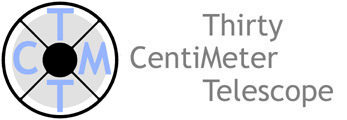
www.tcmt.org
Software
SIPS (Scientific Image Processing System)
Processing images from large sensors and wide-field telescopes cannot be done without powerful software running on powerful computers. The SIPS software and particularly its Photometry tool is designed to allow semi-automated processing of large number of hi-resolution images and saving light curves of all stars of interest within the field of view.
However, the SIPS software package functionality is much wider than photometry processing. In fact, the software was originally designed to handle cameras and control image acquisition (from sub-frame, binning and filter wheel control to FITS header definitions and file handling). Downloaded images have to be displayed and examined, so functions for image stretching (including non-linear gamma curve stretch) and zooming become part of SIPS. Functions for image calibration were added as well as mathematical operations for calibration file creation (mean, median, offset, …), followed by other tools including image matching and stacking, image blinking, image profiles etc. Also control of other hardware devices were included, like telescope mounts, focusers, observatory dome and roof controllers etc.
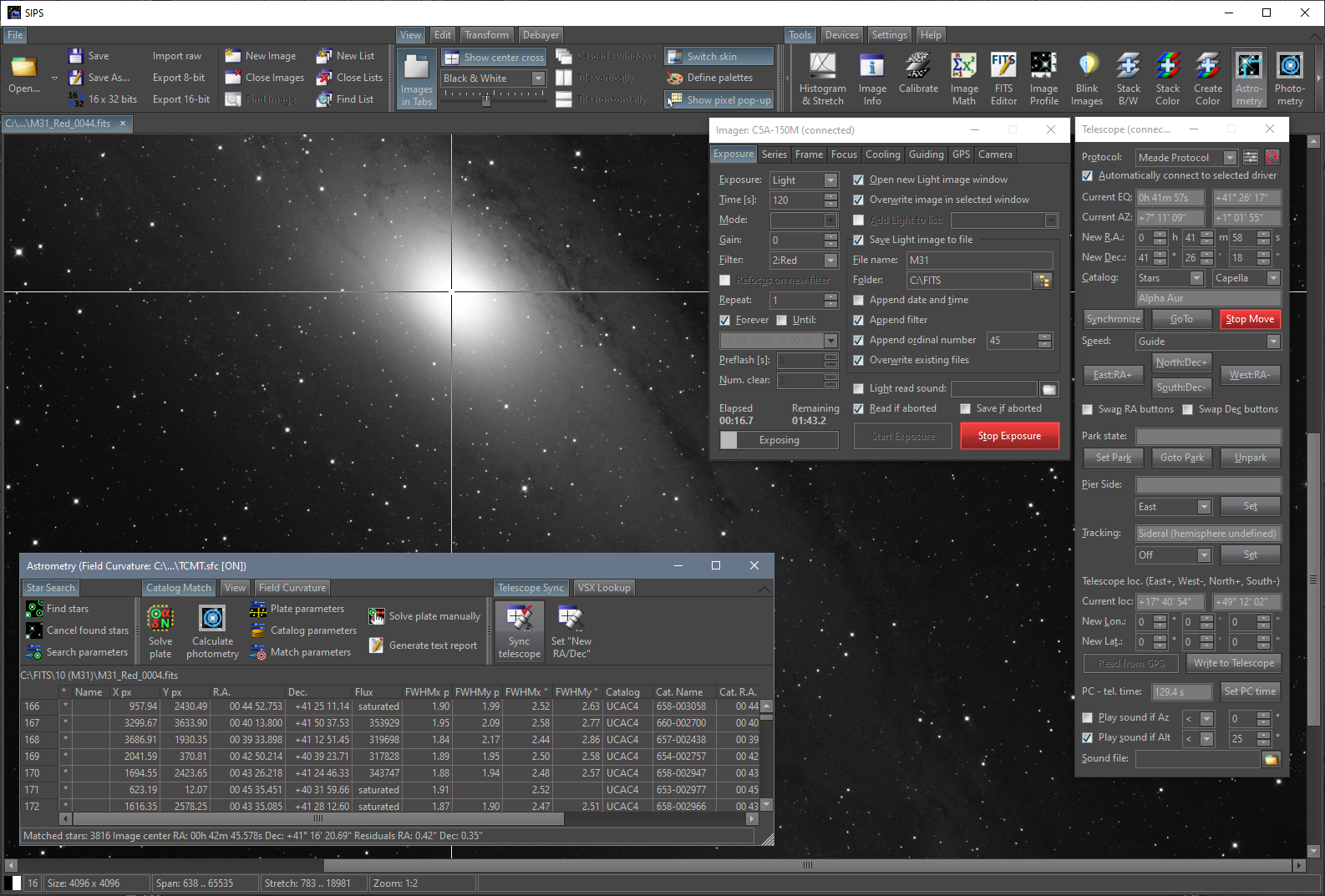

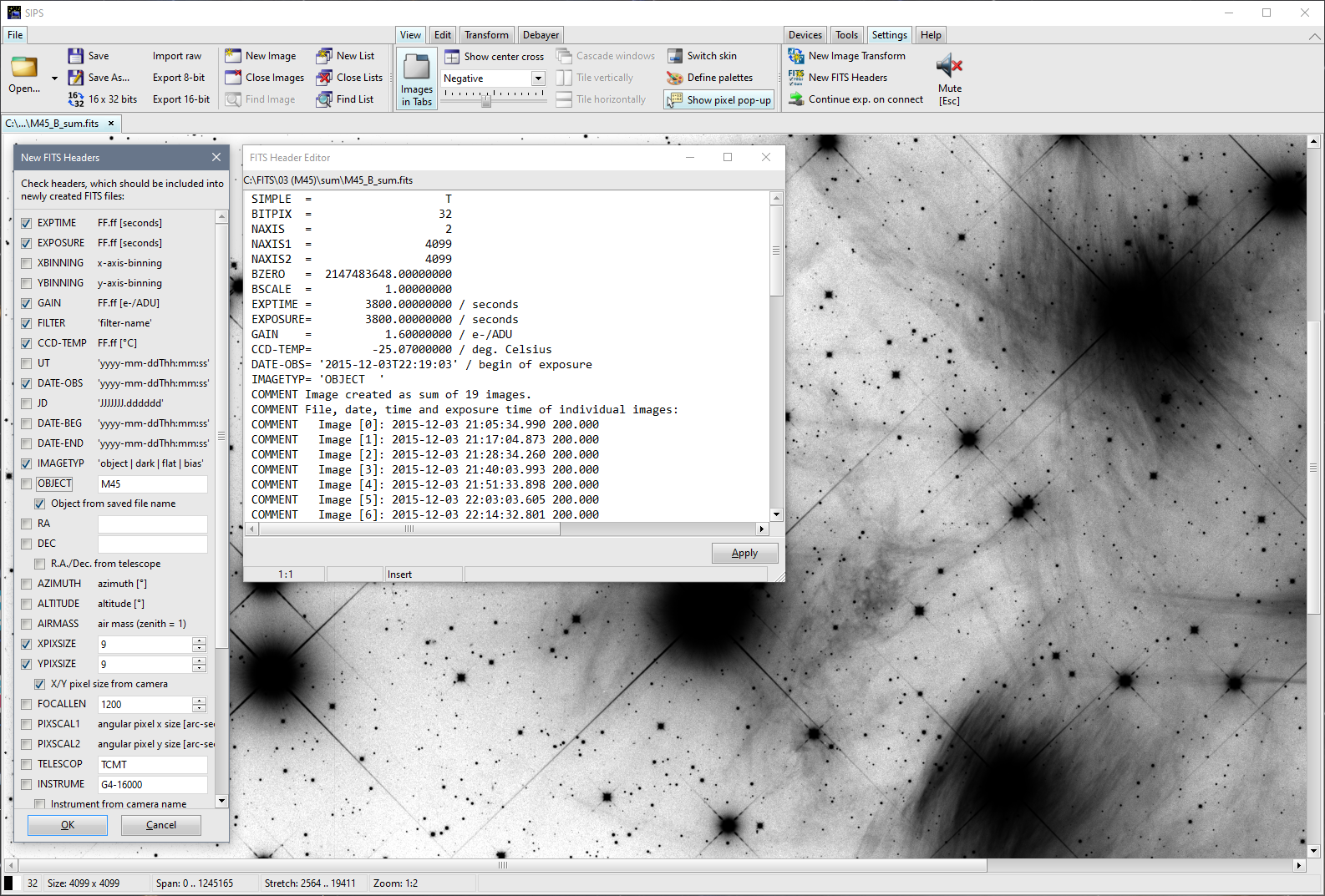
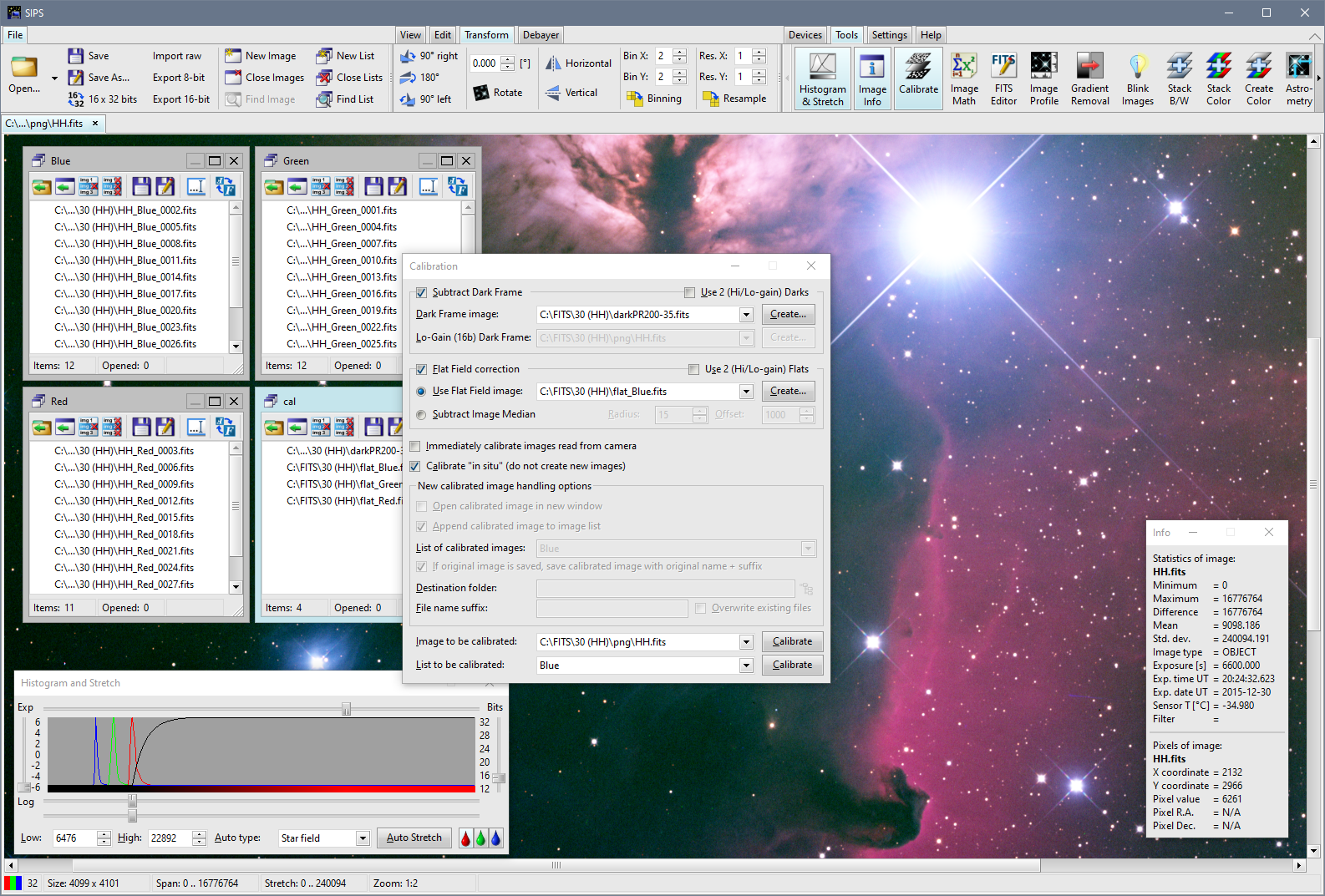
Now SIPS is a powerful package capable to control whole observation and process acquired images. However, the image processing functions include mainly research-related algorithms (astrometry, photometry), not the processing of aesthetical astro-photography images, which can be handled much better by other software packages. Remember, the first ‘S’ in the SIPS abbreviation means Scientific.
Especially interesting for variable star research is the powerful Photometry tool. Refer to the SIPS User's Guide, included in every SIPS installation.
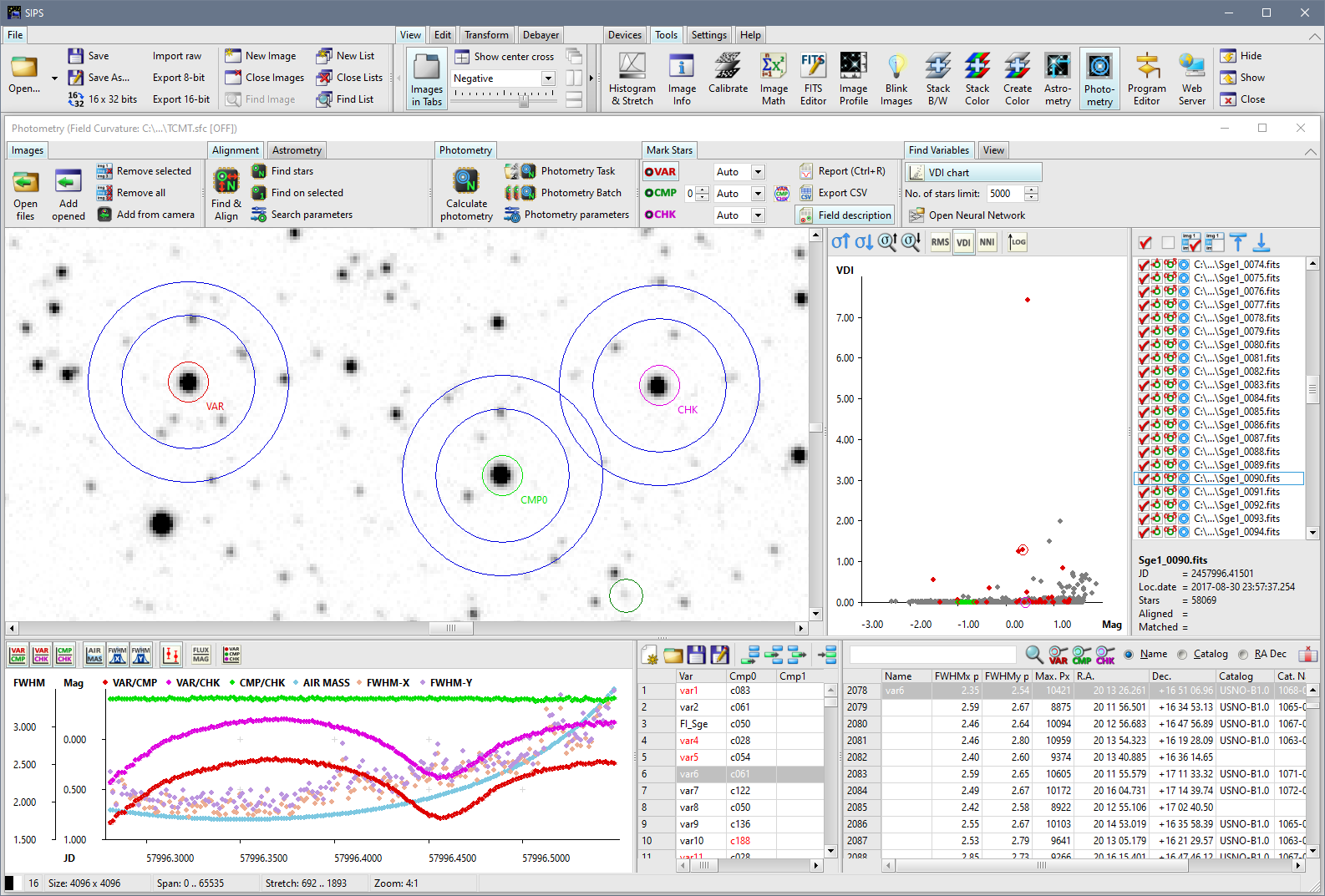
SIPS is a free software running on Windows operating systems. It is available in both 32-bit and 64-bit version. The 64-bit version requires 64-bit Windows to run (32-bit version seamlessly runs on both 32-bit and 64-bit Windows, of course) and also requires all used drivers to be 64-bit! Keep this on mind when trying to use some ASCOM camera or telescope driver, as the vast majority of device vendors provide only 32-bit drivers simply because all astronomy software remains 32-bit only. The key feature of 64-bit SIPS is the ability to use more than 4GB of memory, a really welcome capability when it is necessary to process hundreds of multi-megapixel images at once.
SILICUPS (SImple LIght CUrve Processing System)
While SIPS is designed to control observation runs and also to process photometry of acquired image sets, SILICUPS main purpose is to organize and analyze light curves of variable stars and transiting exoplanets. SILICUPS is designed to extract information from light curves to do actual research.
- Organize light curves
- Keep track of all observed stars
- Find when a star was observed, which light curves are still missing, …
- Access meta-data of all observed stars (and comparison/check stars)
- Export observations (CSV or HTML)
- Analyze light curves
- Plot light curves (time-based, compressed, phased, …)
- Find/fit minima, draw O-C diagrams
- Find periods (based on minima instances or frequency analysis)
- Fit whole light curves, subtract model from observed data
- Export data (light curves, minima, offsets, …) and graphs (bitmap, SVG)

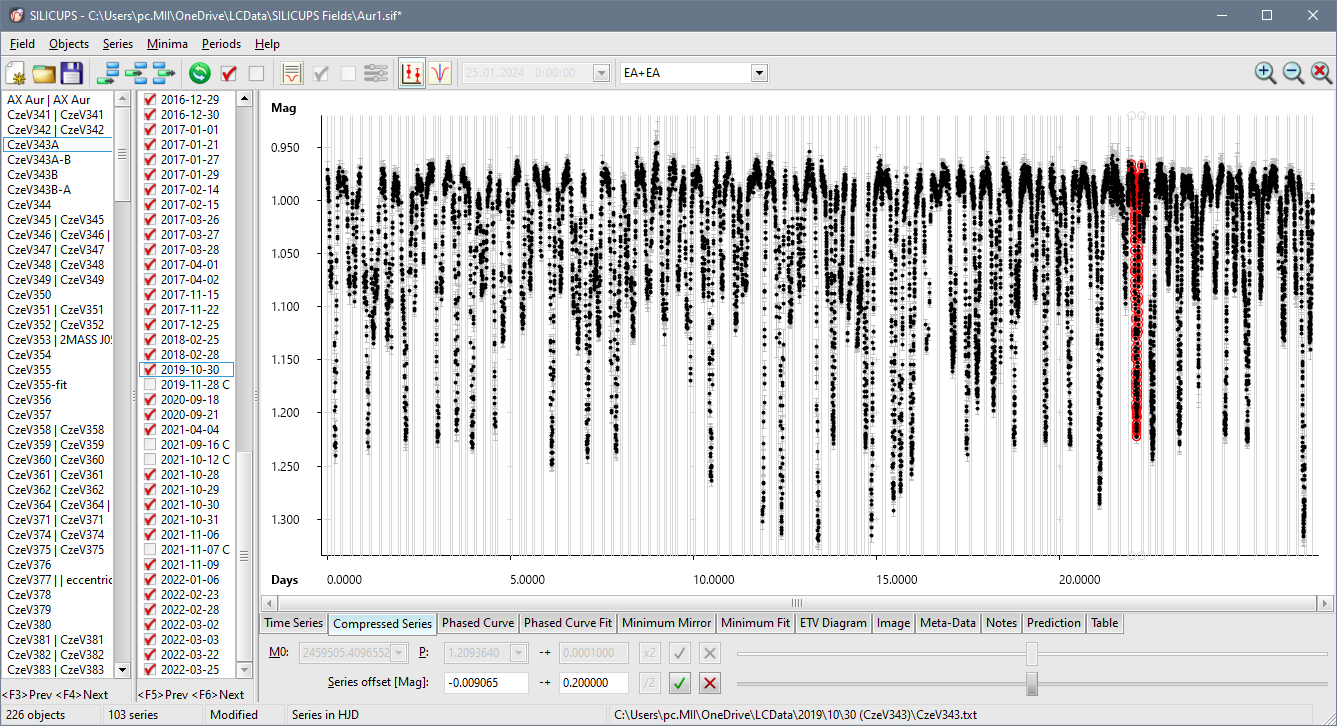

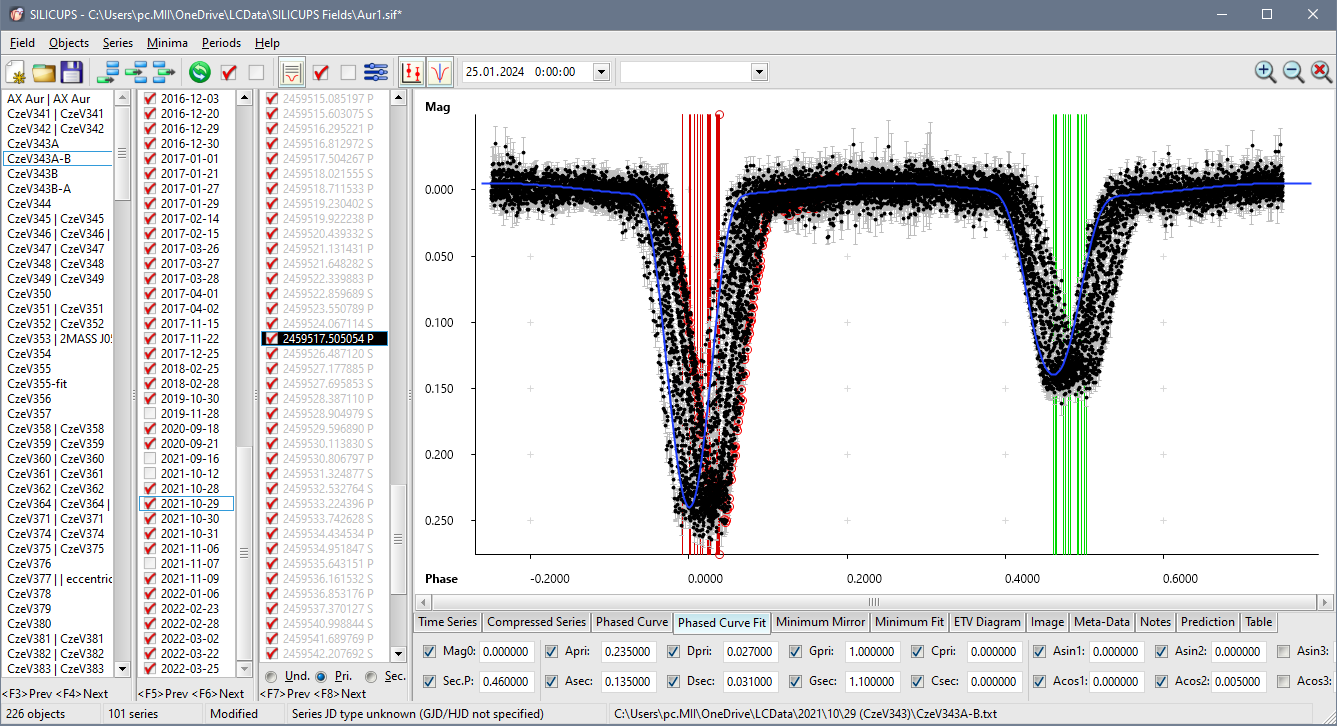
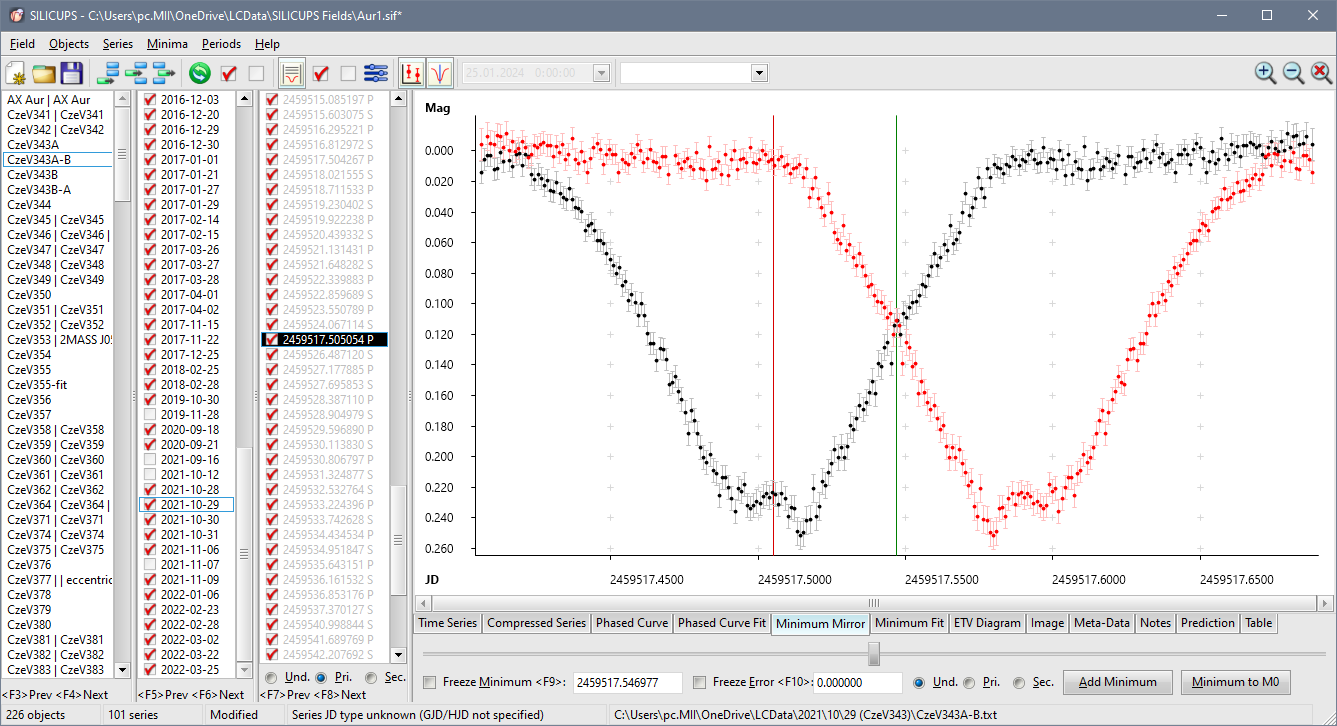
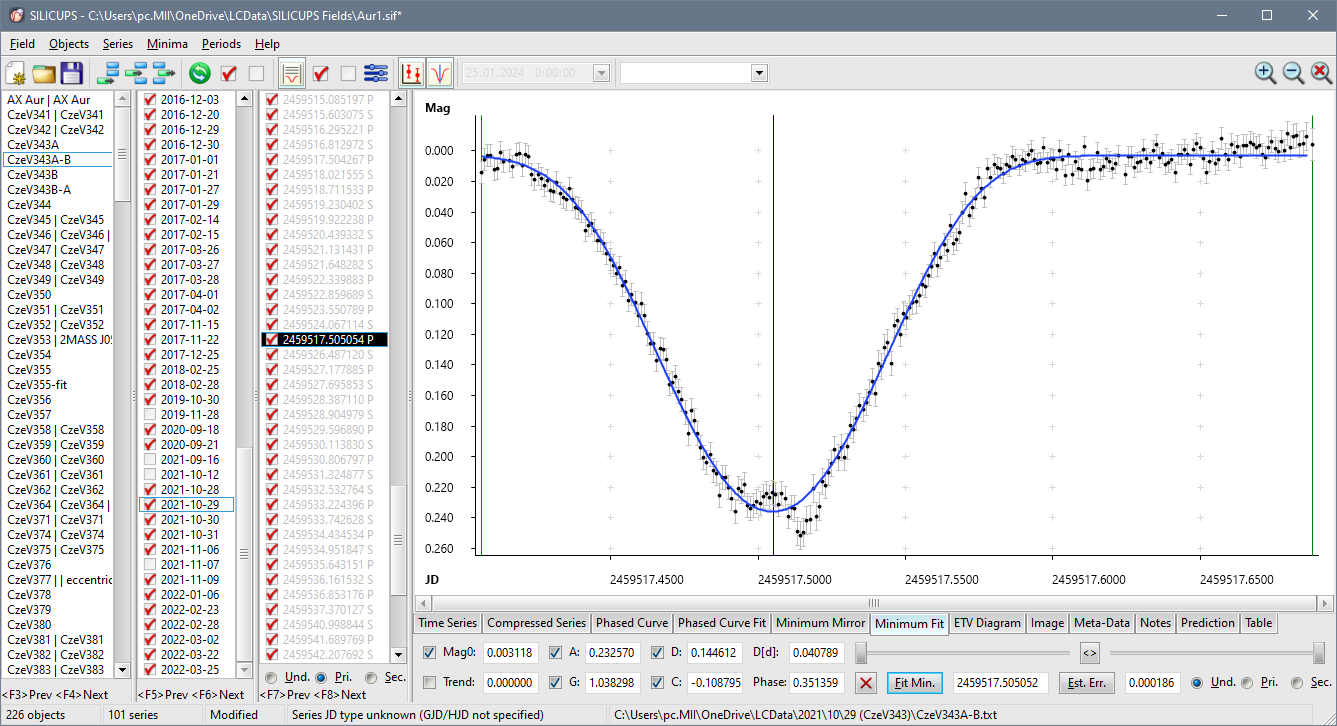
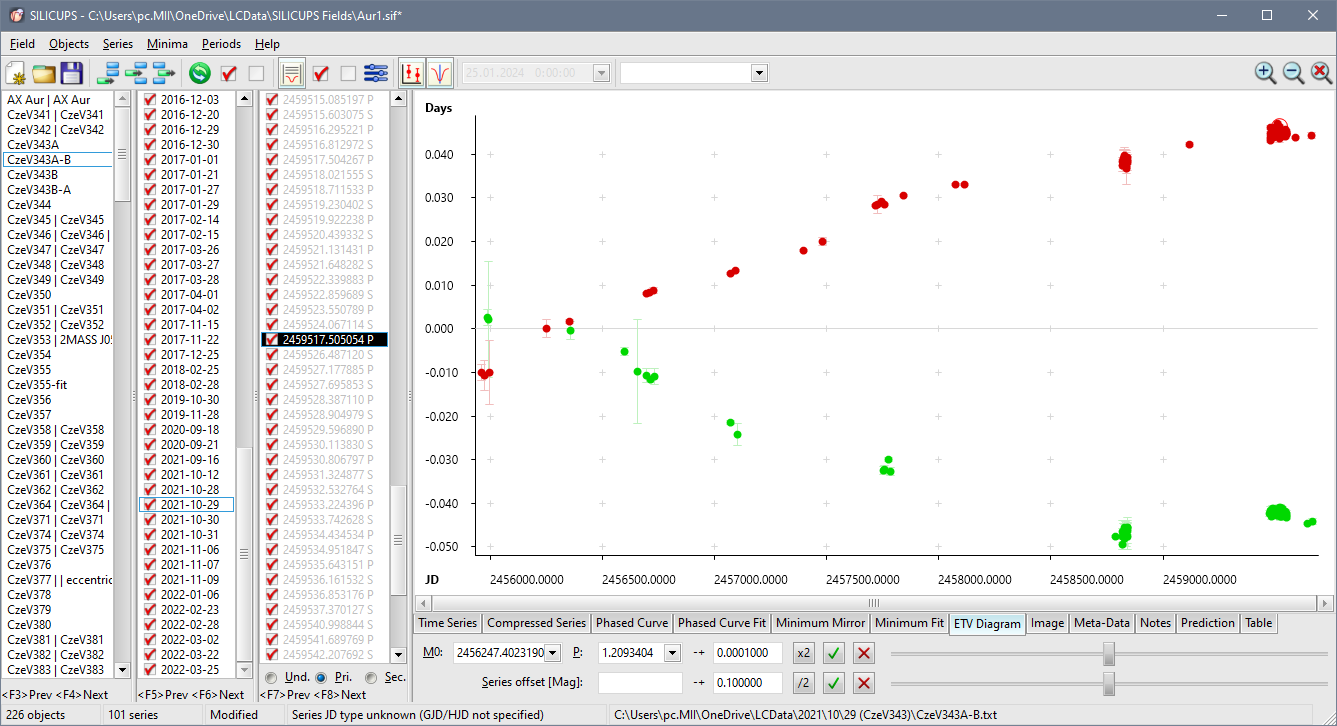
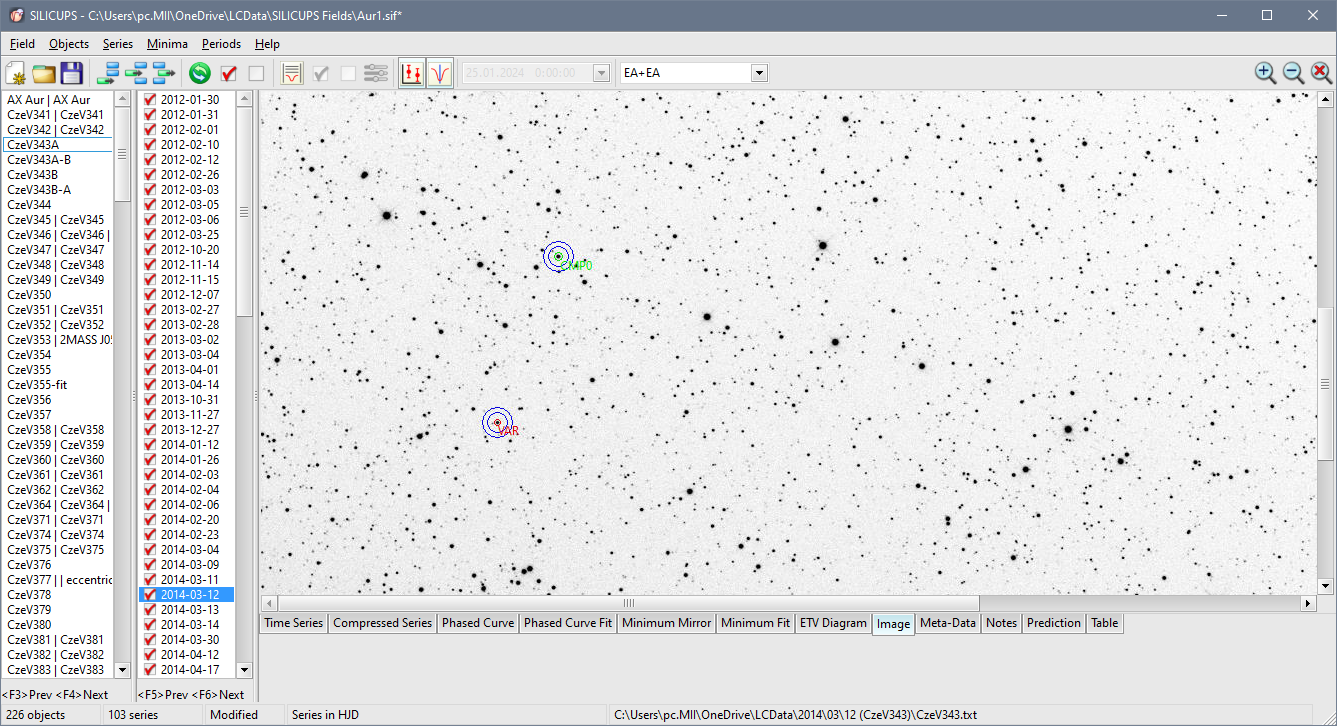
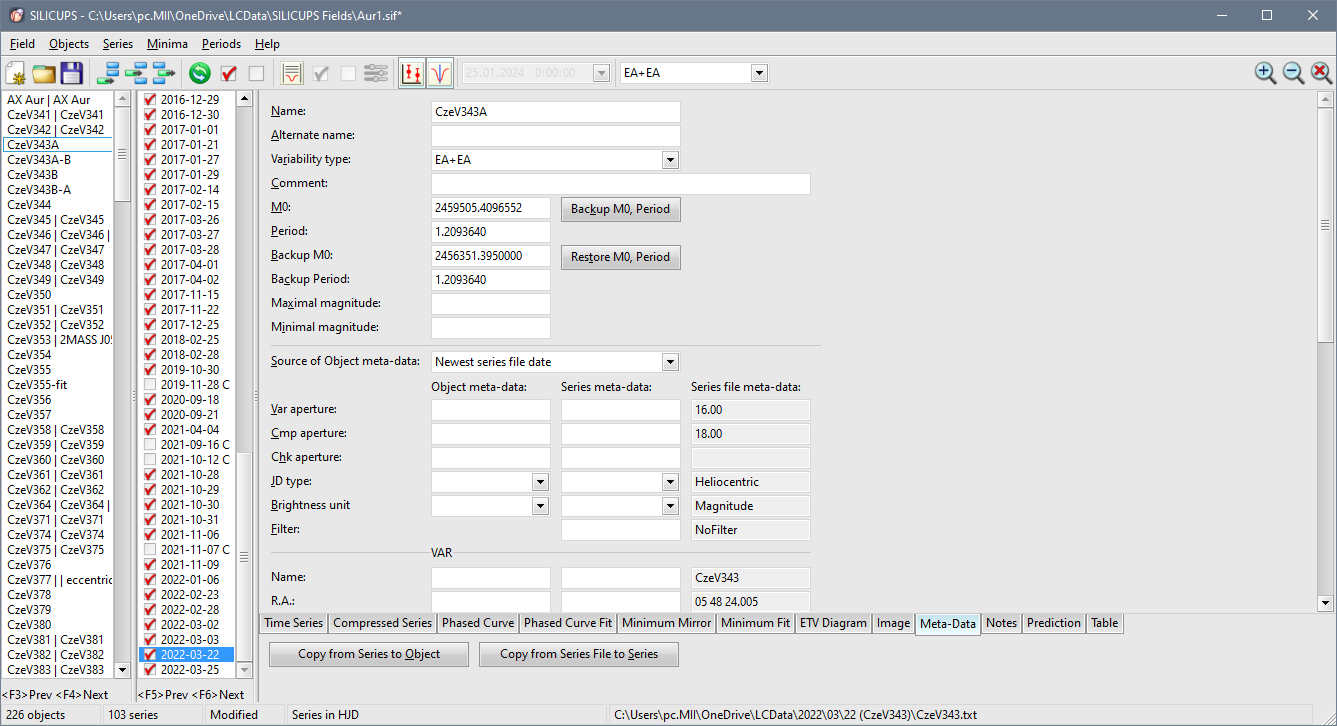
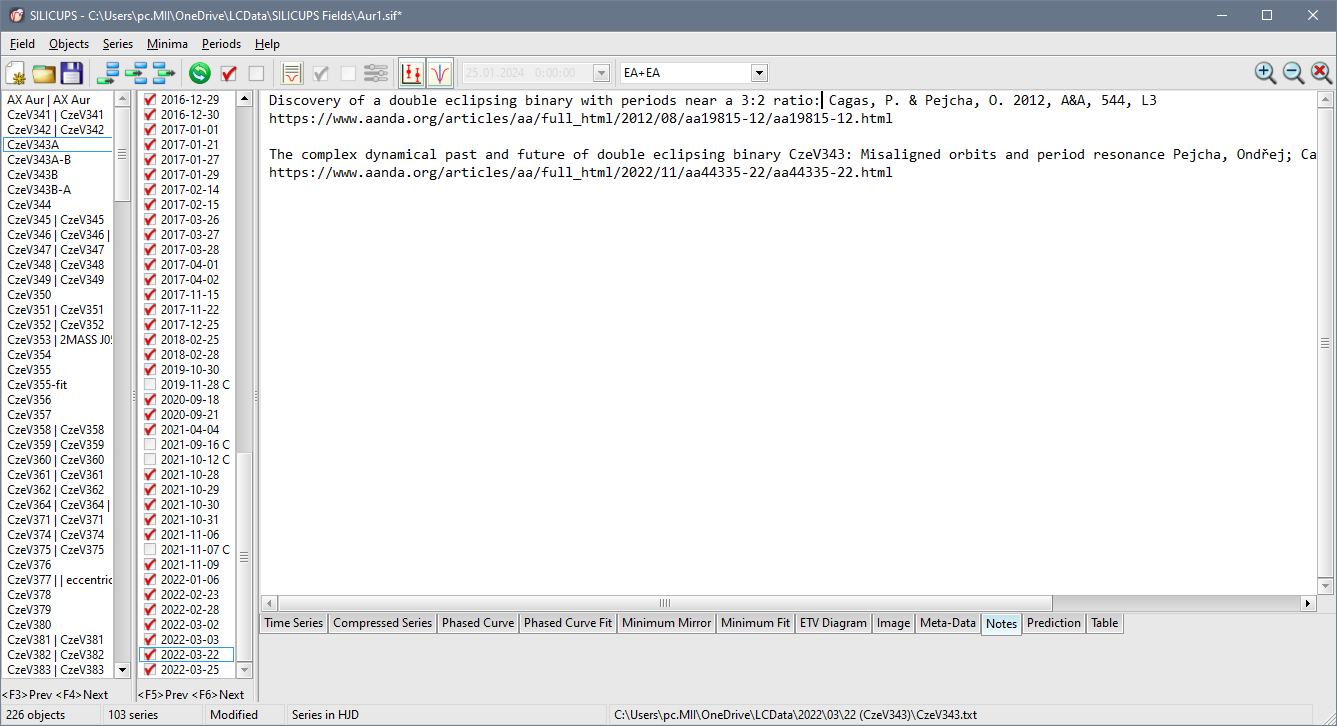
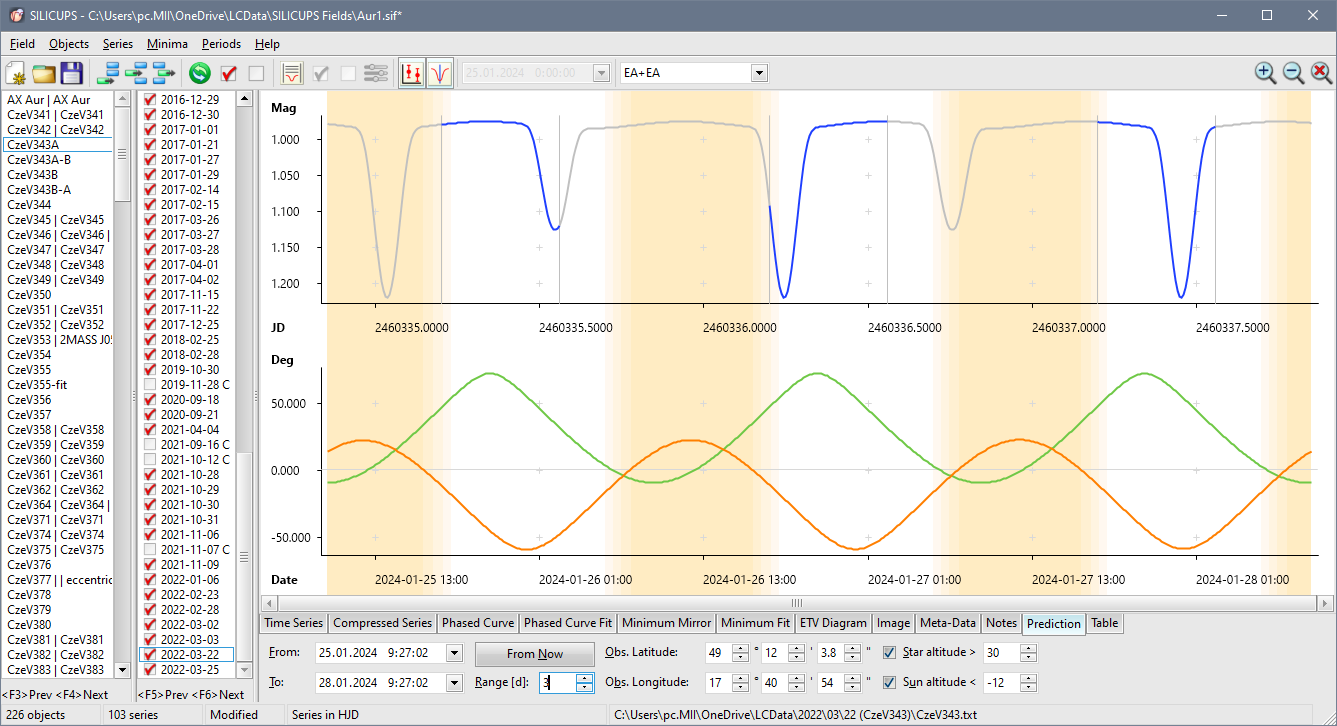
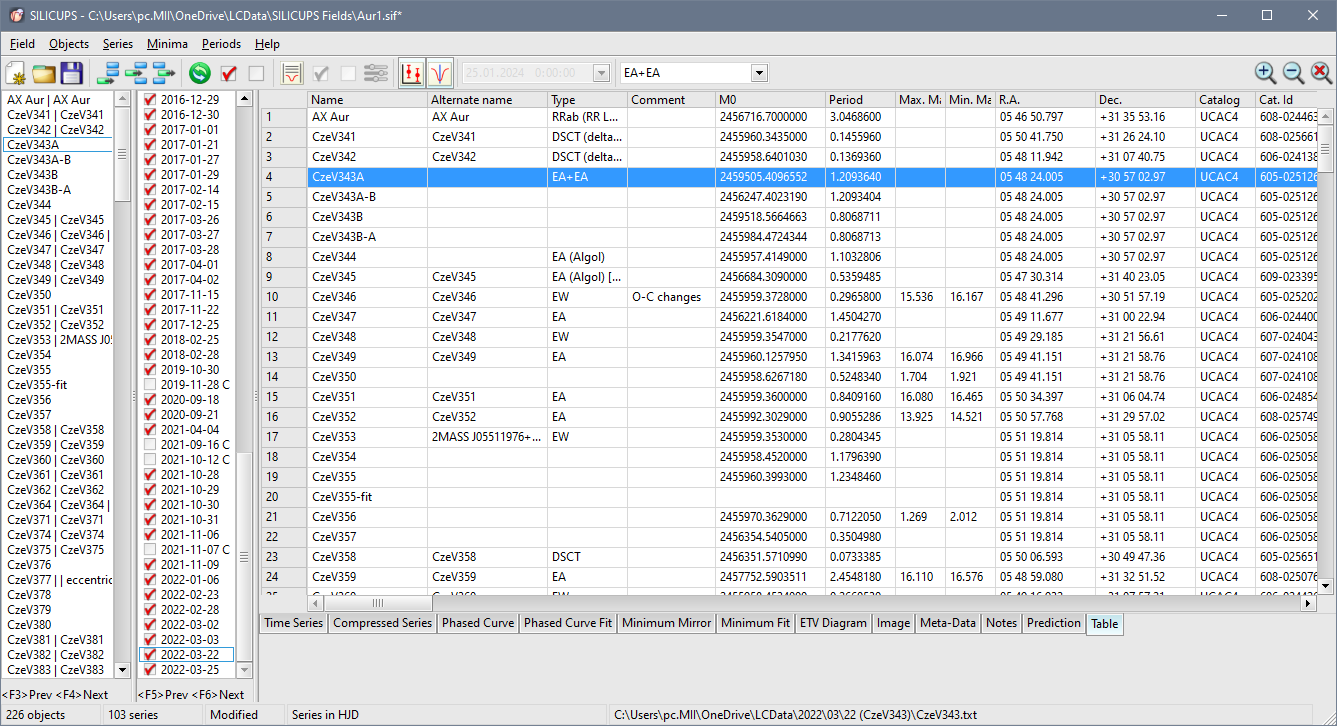
SILICIPS download: